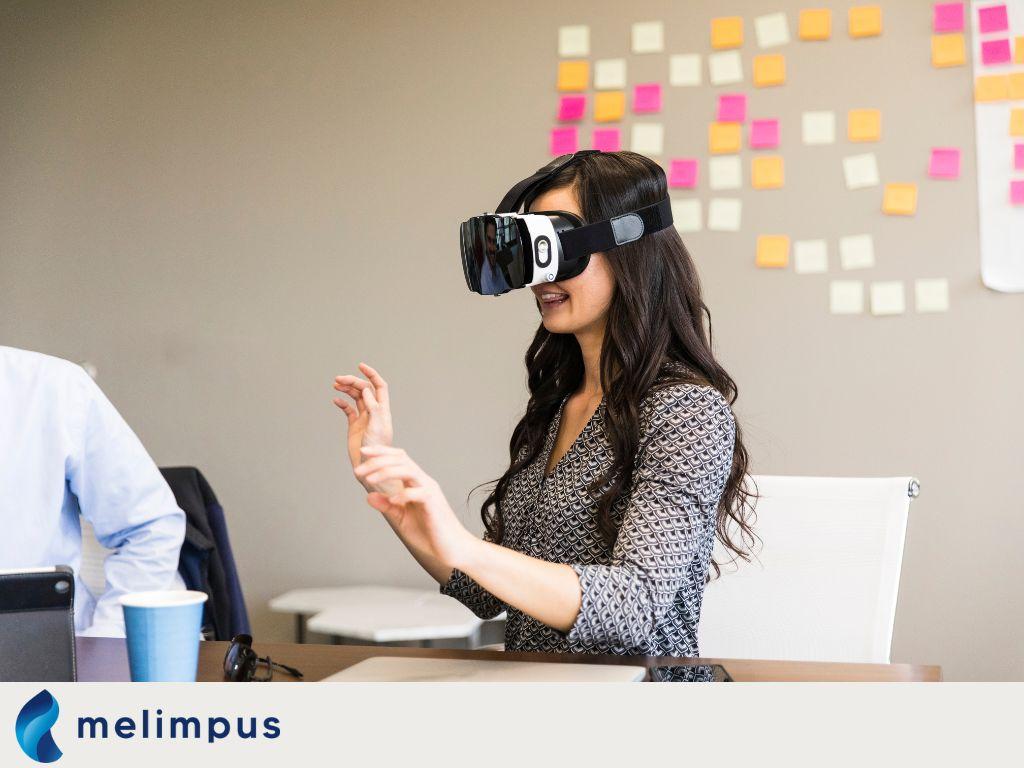A good VR tool should be a little scary: Validating Melimpus environments

Why anxiety is necessary in exposure
In cognitive-behavioral therapy (CBT), it's well-known that triggering a certain amount of anxiety is crucial for the exposure process to work. It may sound paradoxical, but without anxiety, there’s no habituation—and thus, no progress.
“At first, the therapist needs the patient to feel a certain level of anxiety, in order to experience a plateau effect later (habituation), and eventually see a decrease or disappearance of the anxiety (extinction),” explains our psychologist, Stéphanie Delroisse.
In other words, for exposure to be effective, discomfort must be triggered first. That’s why a virtual exposure environment can't look like an enchanted forest, a paradise beach, or a world full of unicorns. We need realistic, sometimes tense situations: stressed-out coworkers, cold bosses, stressful meetings… In short, authentic professional life at its most challenging.
Designing Melimpus environments
At Melimpus, we’ve taken these requirements seriously. We've designed immersive environments that simulate:
-
An open space with its noise, constant interactions, and interruptions
-
A meeting room with public speaking, judgmental looks, and subtle tensions
-
Remote work situations, including loneliness, interruptions, or cognitive overload
Our clear goal throughout: stimulate negative emotions in a safe setting to allow true psychological work.
Study results on a general population
To validate our environments, we conducted a study with working individuals. Participants experienced various immersive settings and then rated their anxiety, discouragement, anger, and guilt levels.
These results were compared to a neutral environment—a simple desk floating in a starry universe, with no social interaction.
“Participants were much more anxious in the professional environments than in the neutral one, which confirms that our tool is effective for training in return-to-work preparation,” says our psychologist.
But anxiety wasn’t the only emotion observed. To further validate our tool, we also measured other professional-relevant emotional states: discouragement, anger, and guilt.
“Just like with anxiety, the results showed much higher levels of discouragement, anger, and guilt in the professional environments than in the neutral one,” she adds. A great sign, as it shows the tool targets a range of emotions in a realistic, multidimensional approach to returning to work.
Clinical and educational use
This emotional validation opens exciting possibilities. Our environments aren’t just for individual therapy. They can also be:
-
Used for training health professionals, HR staff, or managers on how to cope with emotions in the workplace
-
Incorporated into programs helping employees return to work after a burnout, depression, or social anxiety
The immersive format allows safe simulations but with high enough emotional intensity to create long-lasting learning.
Ethical concerns and personalization
Of course, triggering negative emotions isn’t the goal in itself. It’s a guided means, always supervised and used respectfully.
This raises important ethical questions:
-
How far can we go with emotional provocation?
-
How do we ensure the user stays in control?
-
What safeguards are needed to ensure the tool is helpful, not traumatizing?
At Melimpus, we firmly believe in personalized pathways: adjusting stimulus intensity, letting users choose scenarios, integrating feedback and debriefing sessions—these are all key elements of responsible use.
Melimpus in Practice
When someone is away from work for burnout, cancer, or parental leave, they can quickly feel disconnected and anxious. One cause is a loss of confidence in their ability to return to work —or a fear of relapse. This is where Melimpus tools are most relevant. Gradual VR exposure helps individuals face these symptoms, regain confidence, and build skills like resilience—all within a secure setting.
Conclusion: A good VR tool shouldn’t be comfortable. It should provoke a little fear, realistic emotional reactions, and structured experiences to enable tangible progress. That’s the path we’ve chosen at Melimpus—with environments that are tested, validated, and designed for clinical, educational, and ethical use.
What if we stopped avoiding discomfort… and turned it into a growth lever?

